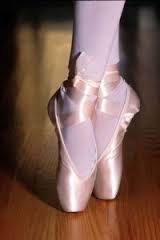As we move into the second half of the year, many dancers are rushing to eisteddfods each weekend and throughout school holidays, exams may be approaching and auditions for full time courses are on the horizon.
Whilst eisteddfods and performances are great for teaching us a wide range of skills that cannot be learnt from class alone, it is important that we are allowing enough rest and recovery time to avoid injury or “burn out”.
It is important to remember that children and adolescents’ bodies are less mature than adults, and that training programs designed for full-time or professional dancers can potentially cause injuries. Children’s bones, joints and tendons have growth cartilage present which cannot endure the same stress as adult bones. This growth cartilage does not close until the ages of 16 – 21. Repetitive stress and micro-traumatic damage to this growth cartilage increases risk of developing an “overuse injury”.
Research has found that up to 50% of all injuries in paediatric sports medicine are “overuse injuries”. These injuries are caused by repetitive stress to the bone, tendon or muscle which causes damage followed by insufficient rest to allow the healing process to occur. These injuries tend to develop over time and are not caused by a single trauma. An overuse injury may be a sign you are over-training!
Over-training can be defined as training that exceeds the body’s ability to recover, resulting in excessive fatigue and impaired performance.
What are the signs to look out for to know if you are over-training?
- Loss of enthusiasm towards dance class and performance
- You feel stressed or anxious about your performance as a dancer
- You always seem to feel sore or have a persisting injury
- Interrupted sleep patterns, or don’t feel rested after getting enough sleep
- Getting sick more often or not recovering from illness as quickly as you used to
- Performance is declining
How can over-training be prevented?
- Avoid specialisation in one sport before puberty! If specialisation occurs at a young age, there is a lot of stress placed on certain muscles and bones, whilst others may not be trained sufficiently. Enjoy engaging in a variety of different sports and activities and as you and your body develop you may choose to specialise as you get older and when the body can handle the stress better.
- Over-reaching is different to over-training. Over-reaching occurs when there are a few days of intense training or competition which may result in some fatigue and a bit of muscle soreness. When this occurs be sure to allow a few days of rest and less intense training to avoid over-training. Research has actually found that over-reaching, followed by a tapered period can actually result in improved performance, so do not be afraid to take a few days rest!
- Ensure you are getting adequate nutrition. This includes eating a variety of foods from all food groups, and consuming adequate amounts to allow the body to continue to grow and develop.
- Ensure good hydration, as dehydration can increase risk of injury.
- Make sure you are getting enough sleep – for teenagers that means 8 – 10 hours of sleep per night.
- Strength and mobility exercises when prescribed appropriately, can help to overcome any muscle imbalances which could potentially lead to an injury (this should be prescribed by someone who has adequate knowledge to train young dancers).
Remember, as a dancer your body is your instrument. Learn to listen
to it and don’t be afraid to take some rest when needed. If you have persisting pain or injury, or if you would like a tailored exercise program to help improve muscle imbalances or your dance technique, Southside Physiotherapy can help!
Ph: 9527 4099
